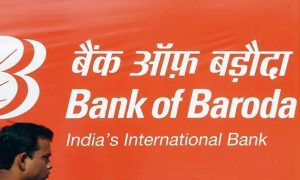Gold of 24 carats in Delhi stands at Rs 59,000 per 10 grams and the price of 22-carat gold was Rs 54,100 per 10 grams
Gold prices on July 1, Saturday, remained largely unchaged. Gold of 24 carats in Delhi on Saturday stood at Rs 59,000 per 10 grams and the price of 22-carat gold was Rs 54,100 per 10 grams. Silver was also at Rs 71,400 per kg.
Read More: Tomato At Rs120 Per KG, Cabbage At Rs 50: Vegetable Prices Skyrocket Across Cities In India
Among other cities, in Mumbai, prices of 24-carat and 22-carat gold stood at Rs 58,850 and Rs 53,950 per 10 grams. In Kolkata, the gold price stood at Rs 58,850 per 10 grams for 24 carats, while the price for 22 carats was at Rs 53,950 per 10 grams.
The prices will be updated later as per the trend in the market.
In Chennai, 24-carat and 22-carat gold were available for purchase at Rs 59,240 and Rs 54,300. In Lucknow, 24-carat and 22-carat gold stood at Rs 59,000 and Rs 54,100. In Noida, the prices were Rs 59,000 and Rs 54,100. In Gurugram also, gold prices were at Rs 59,000 and Rs 54,100 per 10 grams.
Read More: International Credit Card Spends Excluded from Remittance Scheme: Finance Ministry
On the MCX, on Friday, gold rose 0.30 per cent to close at Rs 58,190 per 10 grams in the futures market. However, silver was up by 0.59 per cent to Rs 70,010 per kg.
In the international market, gold was up by 0.61 per cent to $1,920.80 an ounce and silver was up by 1 per cent to $22.86 an ounce in New York.
Gold prices in India are generally influenced by a variety of factors, including global economic conditions, inflation rates, currency fluctuations, and local demand and supply dynamics. Gold is considered as an important part in India due to cultural significance, investment value, and its traditional role in weddings and festivals.
Read More: SBI CFO Charanjit Surinder Singh Attra Resigns; New Directors Appointed to Central Board
Here are some factors that can affect the gold rate:
Demand and Supply: The gold rate is largely determined by the demand and supply of gold in the market. If demand for gold increases, the rate will also increase. Conversely, if supply of gold increases, the rate will decrease.
Global Economic Conditions: The gold rate is also affected by global economic conditions. For example, if the global economy is doing poorly, investors may flock to gold as a safe haven, which will drive up the gold rate.
Political Instability: Political instability can also affect the gold rate. For example, if there is a political crisis in a major country, investors may buy gold as a hedge against uncertainty, which will drive up the gold rate.





































